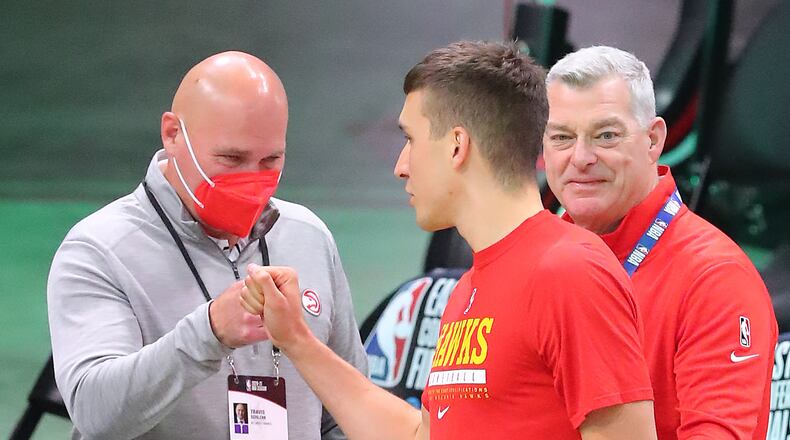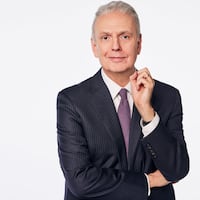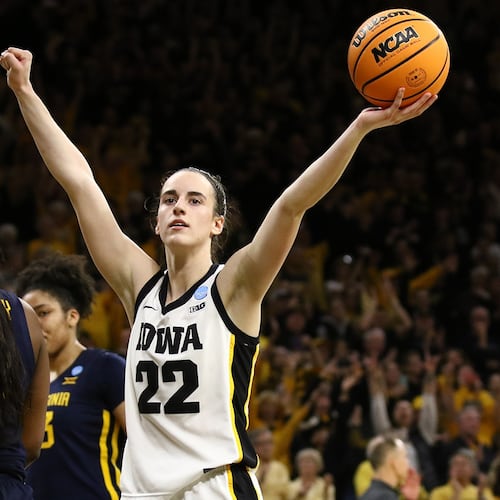Cleveland drafted LeBron James in 2003. It made the playoffs, winning one round, in his third season. Golden State drafted Stephen Curry in 2010. It made the playoffs, winning one round, in his fourth season. The Hawks drafted Trae Young in 2018. They made the playoffs, winning two rounds, in his third season.
This isn’t to say that Young is better than LeBron or as transformational – to the sport, not just to a team – as Curry. This is to suggest that the Hawks have built a team around Young in almost record time.
The Cavaliers made the NBA Finals in LeBron’s fourth season with a team – its second-best player was Larry Hughes – among the worst to play for a title. (It didn’t play long. It was swept by San Antonio.) Cleveland’s next Finals trip would come nine years later, after James returned from Miami. The Warriors needed three drafts after landing Curry to assemble their core four – the others being Klay Thompson, Harrison Barnes and Draymond Green – and it wasn’t until the latter two were third-year NBAers that Golden State, having added Andrew Bogut and Andre Iguodala via trade, won a title.
This isn’t the NBA of yesteryear, when all you needed was a great center. The Celtics acquired Bill Russell and won 11 titles over 13 seasons. Milwaukee won a coin flip with Phoenix for the right to take Kareem Abdul-Jabbar; two years later, the Bucks were champs. The game has changed. The 76ers tanked like no team ever and haven’t made the Finals. Oklahoma City (nee Seattle) drafted Kevin Durant, Russell Westbrook and James Harden in consecutive years. OKC made the Finals in 2011, losing in five games; it hasn’t been back.
The Hawks haven’t made the Finals since 1961, seven years before they left St. Louis. There’s no guarantee they’ll make it again. They just came closer, though, than they have in their Atlanta existence, and they did it four years after Travis Schlenk arrived as general manager to remake this franchise in Golden State’s image.
It’s possible this rebuild could have gone faster – Omari Spellman, drafted with the last pick of Round 1 in 2018, was a whiff – but it’s hard to see how. Schlenk didn’t inherit a tanking team. The Hawks made the playoffs in their final season under Mike Budenholzer. Schlenk’s first draft didn’t carry a lottery pick. At No. 19, he took John Collins of Wake Forest. The No. 18 pick was T.J. Leaf; No. 20 was Harry Giles.
Over four seasons, Collins has averaged 16.6 points and 8.4 rebounds. Over nine Atlanta seasons, Al Horford – picked No. 3 by Billy Knight in 2007, just behind Durant – averaged 14.3 points and 8.9 rebounds. In his first act as GM, Schlenk landed an instant starter with a pick where you’re hoping for an eventual contributor.
Folks will wonder forever about the 2018 draft, wherein Schlenk traded the rights to Luka Doncic to Dallas for Young and the Mavs’ No. 1 pick in 2019. As much as some tried to characterize this as choosing Sam Bowie over Michael Jordan, it was no such thing. Doncic was really good from the start. Young was, too. The gap between the two was never vast. Off the strength of these playoffs, it would be tough to discern a gap at all. Also: The deal wasn’t just Young for Doncic; it would become Young and Cam Reddish for Doncic. As we were reminded in Game 6 against Milwaukee, Reddish is a talent.
Not counting Spellman, here’s what four Round 1s have wrought: Collins (starter), Young (franchise), Kevin Huerter (sixth man/playoff starter), De’Andre Hunter (starter), Reddish (key reserve at worst) and Onyeka Okongwu (rotational player as a rookie). That’s a haul. That’s as well as you can do without winning the lottery, which has proved to be beyond even Schlenk’s powers.
The Hawks haven’t just compiled a roster. They’ve built a functioning team. These guys go together. (Should Collins leave as a restricted free agent, Hunter offers cover.) Center Clint Capela was acquired last year from Houston. He led the league in rebounding. In free agency last fall, the Hawks bought wing shooter Bogdan Bogdanovic and Danilo Gallinari, who defies compartmentalization. They signed Rajon Rondo, who wasn’t a fit; they shipped him to the Clippers for Lou Williams, who was.
The striking thing about the Hawks in the playoffs – apart from the shock of them sticking around so long – was how much deeper they seemed than their opponents. The Knicks’ starters in Game 1 of Round 1 included Elfrid Payton, Reggie Bullock and Nerlens Noel. The 76ers have a $30 million point guard who can’t shoot; they also wound up with Furkan Korkmaz in their starting five. Yeah, the Bucks beat the Hawks in games 5 and 6 without Giannis Antetokounmpo, but Budenholzer has shrunk his bench to Pat Connaughton, Bobby Portis and sometimes Jeff Teague.
The Hawks don’t have a Giannis or a Joel Embiid. (Nor do they have a Ben Simmons, which is a good thing.) They do have Young, who became a different player under Nate McMillan, and a supporting cast capable of taking star turns. We can fault Schlenk for not firing Lloyd Pierce sooner, but given that the coach’s second and third seasons came during a pandemic, the GM surely was granted the benefit of every doubt.
No matter, though. The Hawks are where they hoped to be, having arrived faster than any reasonable observer could have dreamed. Four years, four drafts, one deft trade, one big dip into free agency, one expertly timed coaching change – and there they were, two games from the Finals. Travis Schlenk, worker of wonders.
About the Author
The Latest
Featured


